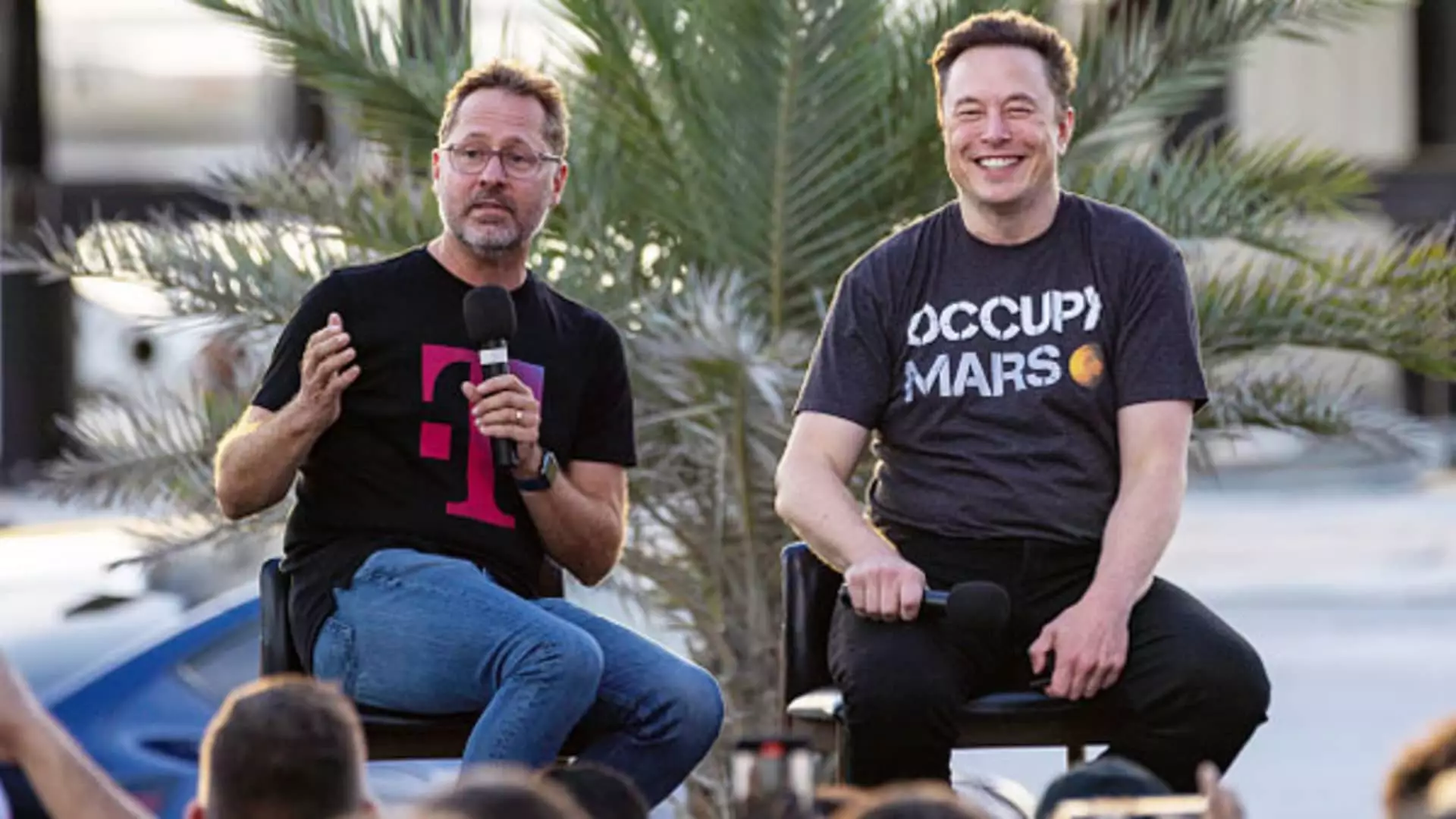SpaceX has achieved another milestone in the race to connect unmodified phones directly to satellites. The company announced on Wednesday that it successfully sent text messages via its Starlink satellites using T-Mobile’s network. This breakthrough test validates SpaceX’s direct-to-device (D2D) capabilities and paves the way for the company to bring its cell service to market in the near future.
Last week, SpaceX launched the first six Starlink satellites equipped with D2D capabilities. The Federal Communications Commission had granted the company authorization to test this technology just last month. In the recent texting demonstration, SpaceX communicated with unmodified cell phones on the ground to its new satellites in space, proving the functionality of the system. The company expressed confidence in the demand and high interest for D2D capabilities, highlighting its partnerships with mobile operators like T-Mobile, Rogers, Optus, and KDDI. SpaceX intends to offer D2D text service starting this year and aims to expand its services to include voice, data, and Internet of Things (IoT) capabilities by 2025.
While SpaceX is making significant strides in the D2D space, it is not alone in this endeavor. Many other smartphone makers, service providers, and satellite companies are actively involved in developing and deploying D2D services. Apple, for instance, has invested heavily in its “Emergency SOS with Satellite” service, which was introduced with the iPhone 14 models. This service is made possible through collaboration with satellite operator Globalstar. Furthermore, Qualcomm recently ended its partnership with Iridiu, a satellite communications company. Iridium has now embarked on a new project called “Project Stardust” and plans to test its D2D service in 2025, with a rollout slated for 2026.
The successful texting demonstration conducted by SpaceX not only validates the feasibility of D2D capabilities but also foreshadows the transformative impact on communication services. Once fully operational, D2D services will enable seamless satellite connectivity on unmodified cell phones, revolutionizing connectivity in remote areas and enhancing emergency response capabilities. With SpaceX already boasting a network of over 5,000 Starlink satellites and over 2.3 million customers worldwide, the potential for widespread adoption of D2D services is enormous.
As companies like SpaceX push the boundaries of satellite communication, the future appears promising. The ability to directly connect unmodified cell phones to satellites opens up countless opportunities for global connectivity. Whether it be enabling communication in rural and underserved areas, providing emergency services during crises, or facilitating IoT connectivity, the benefits of D2D services are vast. While SpaceX is at the forefront of this revolution, collaboration and competition among various players in the space communication industry will likely lead to further advancements and innovations.
SpaceX’s successful texting demonstration using T-Mobile’s network via Starlink satellites marks a significant milestone in the development of D2D capabilities. The company’s plans to offer D2D text service this year and expand to other services in the future demonstrate its commitment to transforming satellite communication. With the increasing demand for connectivity and the potential for improved global communication, the future appears bright for D2D services. As the space economy evolves, it is evident that satellite communication will play a crucial role in connecting the world like never before.


Leave a Reply